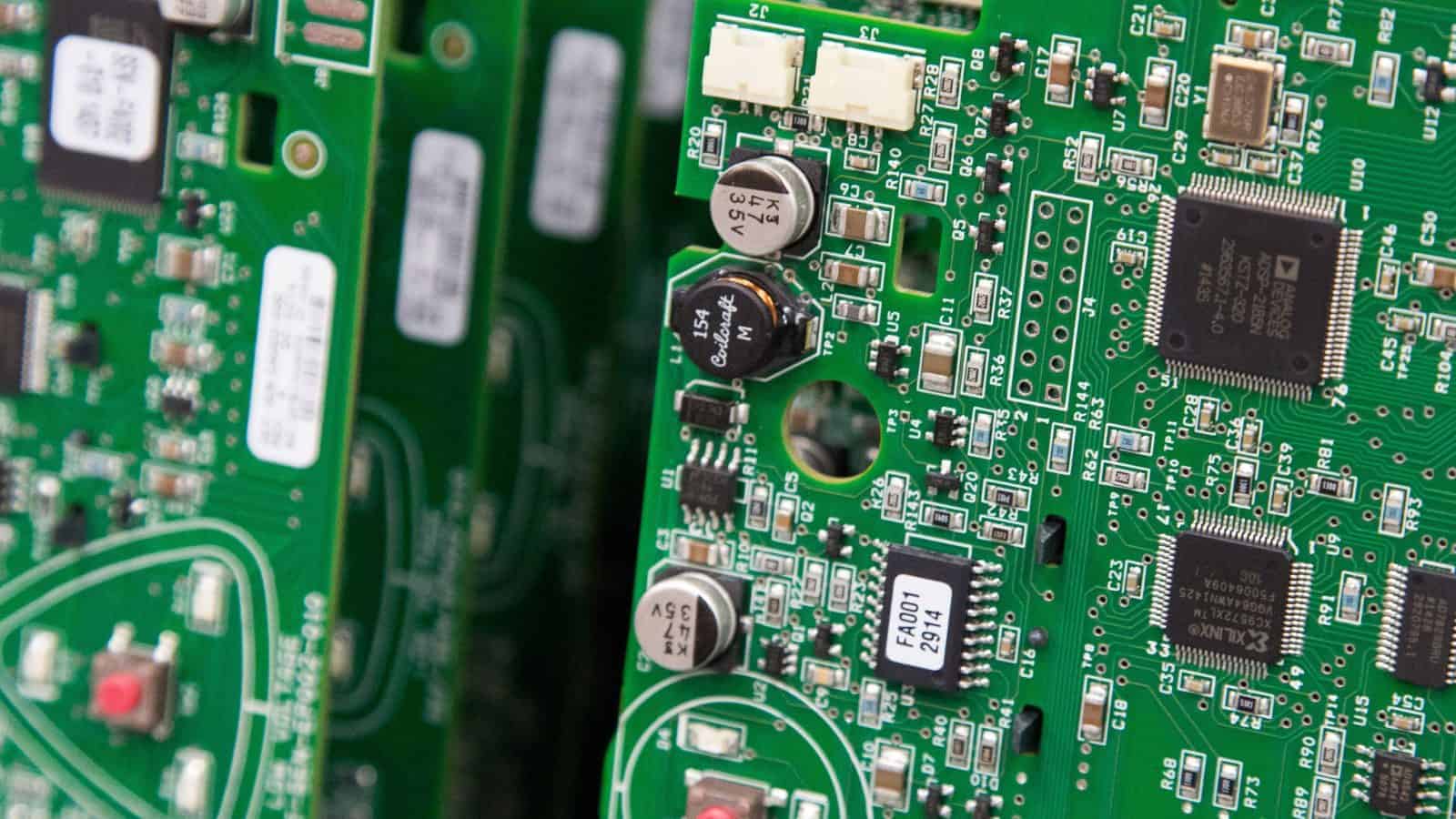What Foundations and Corporate Donors Are Looking For
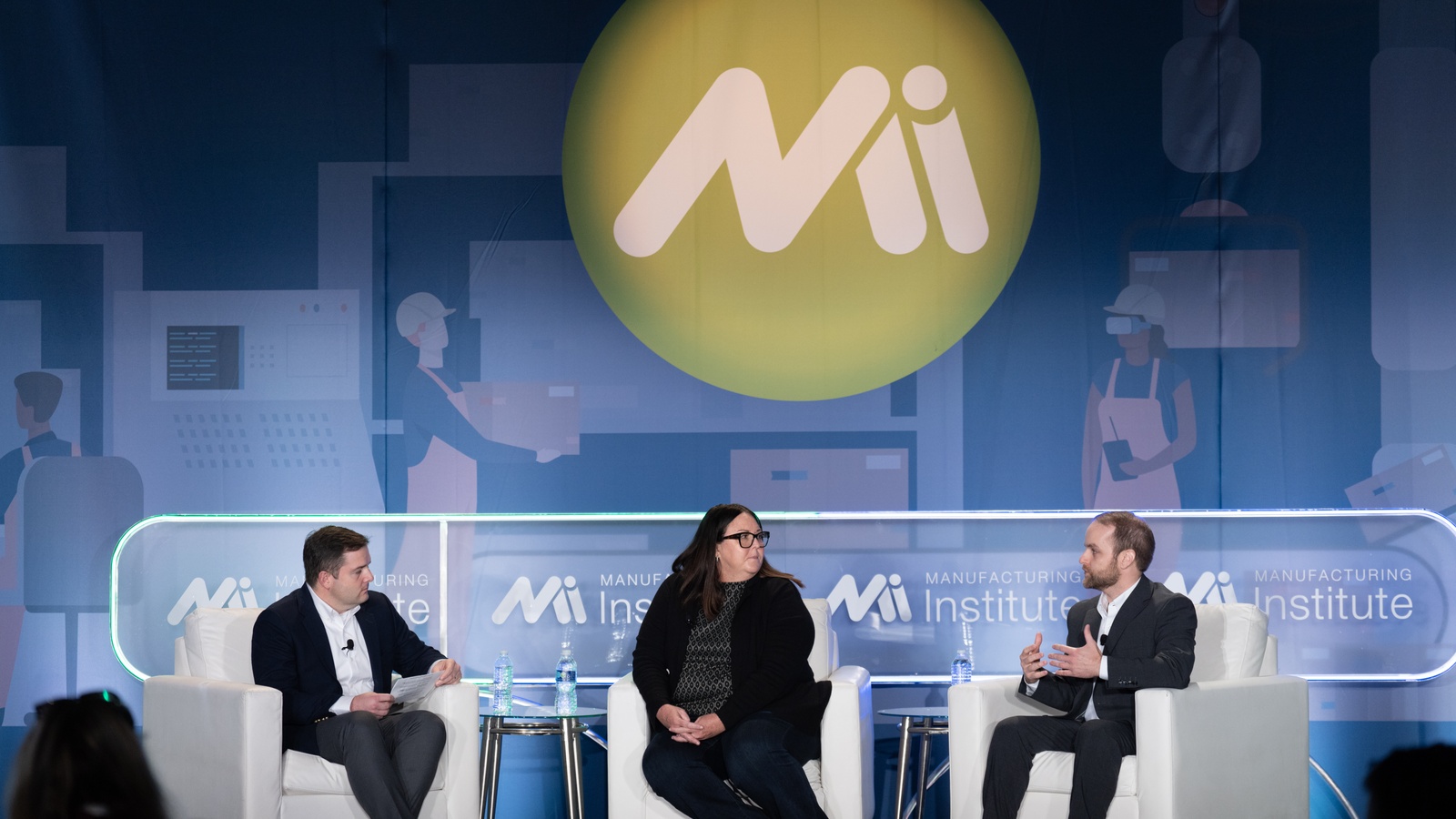
Many manufacturers pour their time and money into bolstering local programs for young people, hoping to shape the next generation of manufacturing workers. But how do they determine which organizations to work with, and how should those organizations attract their attention?
At the Manufacturing Institute’s inaugural Workforce Summit, held in Cincinnati back in October, panelists from WestRock Company and Arconic Foundation shared tips for those seeking to build partnerships with potential donors.
Top of mind: Education and workforce development, environment sustainability and social equity are all funding priorities, according to the panelists. Foundations and corporate donors are interested in programs that benefit local communities and reflect their organizations’ values.
- Mandy Burnette, director of corporate giving at WestRock, emphasized that the company looks for organizations that are capable of building a long-term relationship. As she put it, “We don’t give. We don’t donate. We invest in strategic partners.”
The perfect partner: Burnette and Arconic Foundation President and Treasurer Ryan Kish discussed what they look for when making funding decisions.
- A track record of success. Can the program be replicated successfully elsewhere? If so, that’s a huge plus, according to Kish. “A great example of this is FAME,” he added, referring to the workforce development program founded by Toyota and now operated by the MI. “You don’t need to convince me that FAME works. … If I have an opportunity to replicate FAME in one of our communities, I’m going to jump on that.”
- Impact: Kish said that he was drawn to the MI’s 35 x 30 campaign because he recognized that it was impactful. “It not only aligns with our funding priorities, but it’s going to affect a huge number of women and increase [the number of] women in the workplace. That’s what we’re after.”
Taking that first step: Both Burnette and Kish agreed that organizations should talk to their local connections, who will be able to steer them to the right decision-maker in a company or foundation.
- “If you’re reaching out, have a tight story,” Kish said. “Have your project activities, your budget, your timeline and impact story well-defined when you come to a local contact so that it grabs their attention and gets them engaged with you.”
Think long term: Beyond just focusing on attracting talent for jobs of today, foundations and companies are looking increasingly to support initiatives that build talent pipelines for the future.
- “All we’re doing right now [as an industry] is fighting over the same scarce talent,” Kish said. “Take the opportunity to make an investment in early STEM education to build the pipeline, so you’re not dealing with the same problem in 5 and 10 years.”
The last word: The best way to start thinking through partnerships? “Know your end result and then back into it. That’s what we did with our strategy. We knew what we were trying to accomplish and achieve, and then we backed into it and thought about the partners that could help us get to the results that we wanted,” Burnette said.
Top Manufacturing Tech Trends of 2022

Now that 2023 is here, we’re looking back on 2022’s top tech trends in manufacturing. The NAM’s digital transformation arm, the Manufacturing Leadership Council, and its innovation management division, the Innovation Research Interchange, gave us an overview.
AI everywhere: From automatically responding to shifts in production demand to anticipating breakdowns in the supply chain, artificial intelligence showed up more than ever before throughout manufacturing operations.
- More than two-thirds of manufacturers are either using AI now or will be doing so within two years, according to MLC research.
- Current use cases include predicting needed maintenance for equipment, forecasting product demand and monitoring performance metrics such as productivity and efficiency. Future use cases could include fully autonomous factories that run continuously with minimal human intervention.
Training on demand: Training for technicians and frontline operators used to mean time in a classroom with a live instructor. In 2022, more manufacturers turned to virtual, on-demand learning tools that allowed workers the freedom to learn at their own pace.
- This ran the gamut from video content libraries to immersive augmented reality/virtual reality experiences that guide and correct trainees.
- In 2023 and beyond, this type of learning experience will be essential to attracting and retaining younger workers who are familiar with digital learning and want the latitude to gain new skills on their own schedules.
Digital twins: Manufacturers used digital twins—virtual models designed to reflect a physical object, system or process accurately—to create design prototypes and test their performance.
- Digital twins will continue to allow for new levels of design optimization, improved product development and performance and significant waste reduction for manufacturers.
Robotic collaboration: Once confined to steel cages and bolted to floors, industrial robots took center stage in 2022.
- No longer limited to repetitive tasks and kept far from human workers, new-generation robots are safe enough to work alongside employees, can be moved quickly around shop floors and are programmed easily to do multiple tasks.
- Since they’ve also become more affordable, they’re an economically feasible investment for companies of all sizes.
Cybersecurity as safety: A rise in connected factories also meant a rise in cyberattacks on manufacturers. In an industrial setting, a cyberattack can be very dangerous, as it can cause equipment to malfunction.
- Last year, more companies began addressing the threat with cyber drills, tabletop exercises for simulated attacks and other training exercises designed to keep businesses—and workers—safe and secure.
Low-code/no-code development platforms: In 2022, more manufacturers embraced the use of mobile and web apps to build applications quickly. Using these platforms, enterprise and citizen developers can drag and drop application components and connect them to create apps—without line-by-line code writing.
- Business teams with no software development experience built and tested applications without any knowledge of programming languages, machine code or the development work behind a platform’s configurable components. We can expect to see more of it this year.
Smart glasses move beyond the pandemic: Many manufacturers kept up their pandemic-era use of smart glasses, which they had used to troubleshoot issues on the ground when travel was restricted and engineers and technicians couldn’t reach sites.
- They also expanded smart glasses’ use to include scanning sensor data so users can see visual data “mapped” onto equipment to better identify issues and fixes.
Interested in learning more? Check out the MLC and IRI for more insights into manufacturing’s exciting, high-tech future.
Sustainability Is a Top Manufacturer Priority, Survey Shows
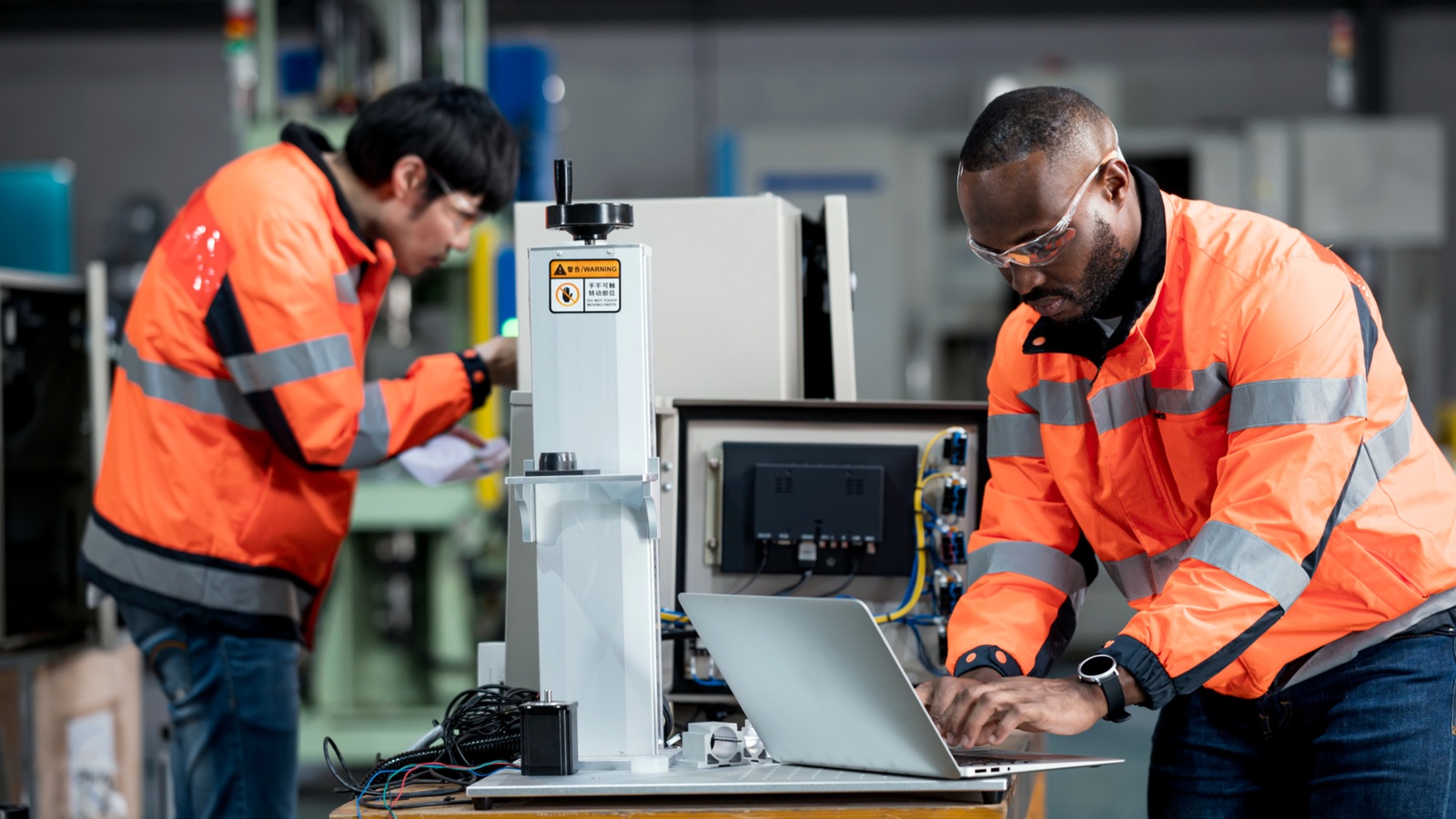
Manufacturers are pursuing sustainability like never before.
That’s according to recent polling conducted by the Manufacturing Leadership Council, the NAM’s digital transformation division. The annual Sustainability and the Circular Economy research survey seeks to determine the progress made in sustainable manufacturing.
Competitiveness: There has been a surge in the number of manufacturing executives who view sustainability as critical to the future of their businesses.
- 58% of respondents in 2022 believe sustainability is essential to future competitiveness compared to 38% in 2021.
- 68% of executives say they are implementing extensive, corporate-wide sustainability strategies. That’s up from just 39% in 2019.
What’s driving change: The motivations go beyond regulatory compliance and cost savings.
- 78% say sustainability is about better alignment with corporate values.
- 68% believe in creating a cleaner, healthier environment.
- 66% seek to improve company reputation with customers and investors.
Top corporate goals: More than half of survey respondents reported having specific sustainability goals and metrics across almost all key functions in the company.
- Goals were most apparent in manufacturing and production (79%), supply chain (69%) and product design and development (67%).
- Additional goals were cited in transportation and logistics (56%) and partner compliance (51%).
Energy efficiency is No. 1: The primary sustainability focus of manufacturers, according to survey results, is energy efficiency and reduction, combined with the transition to renewable energy sources. These efforts are linked intrinsically to meeting net-zero emissions goals.
- 45% of respondents report having announced formal net-zero goals.
- 30% aim to hit net zero by 2030.
Digital tech, employee training play a role: Also on the rise is the number of companies that recognize the importance of digital solutions in their sustainability efforts.
- These tools are being used to manage and monitor materials and energy consumption, optimize operations to improve efficiency and report sustainability progress.
- Respondents also say meeting sustainability targets must include engaging employees through education and training, as well as greening their supply chain.
The last word: An overwhelming 90% of all respondents agree that manufacturing has a special responsibility to society to become more sustainable and accelerate the transition to a future circular industrial economy.
Interested in putting some renewable energy solutions into action, including solar power, battery storage and LED lighting? Programs from utility companies and other entities enable efficiency upgrades with little or no upfront capital. Connect with NAM Energy to explore your options!
Manufacturers: Protecting American Innovation Critical to Fight Current and Future Health Crises
Washington, D.C. – Following today’s announcement by the World Trade Organization’s General Council that member states have agreed to delay a final decision on an expanded intellectual property waiver for COVID-19 products, National Association of Manufacturers President and CEO Jay Timmons released the following statement:
“The WTO’s decision to delay the expanded intellectual property waiver is a welcome step toward protecting American innovation and technology leadership. This is vital not only for future pandemic responses, but also for the sector’s ability to produce new and advanced treatments or fund critical research and development.
“Manufacturers in the U.S. are leading our post-pandemic recovery and investing heavily in the development of cures and therapeutics. An expanded WTO waiver would force manufacturers in America to give away rights unfairly to international competitors and economic rivals like China, disincentivize companies from continuing the cutting-edge research underway, put jobs at risk and harm the sector’s global competitiveness.
“Manufacturers will continue to work with partners around the world to tackle current and emerging health challenges, while protecting the IP rights of those many companies which have been so essential to an effective pandemic response.”
-NAM-
The National Association of Manufacturers is the largest manufacturing association in the United States, representing small and large manufacturers in every industrial sector and in all 50 states. Manufacturing employs more than 12.9 million men and women, contributes $2.77 trillion to the U.S. economy annually and accounts for 55% of private-sector research and development. The NAM is the powerful voice of the manufacturing community and the leading advocate for a policy agenda that helps manufacturers compete in the global economy and create jobs across the United States. For more information about the NAM or to follow us on Twitter and Facebook, please visit www.nam.org
How a Manufacturer Uses R&D to Keep Old Jets Flying
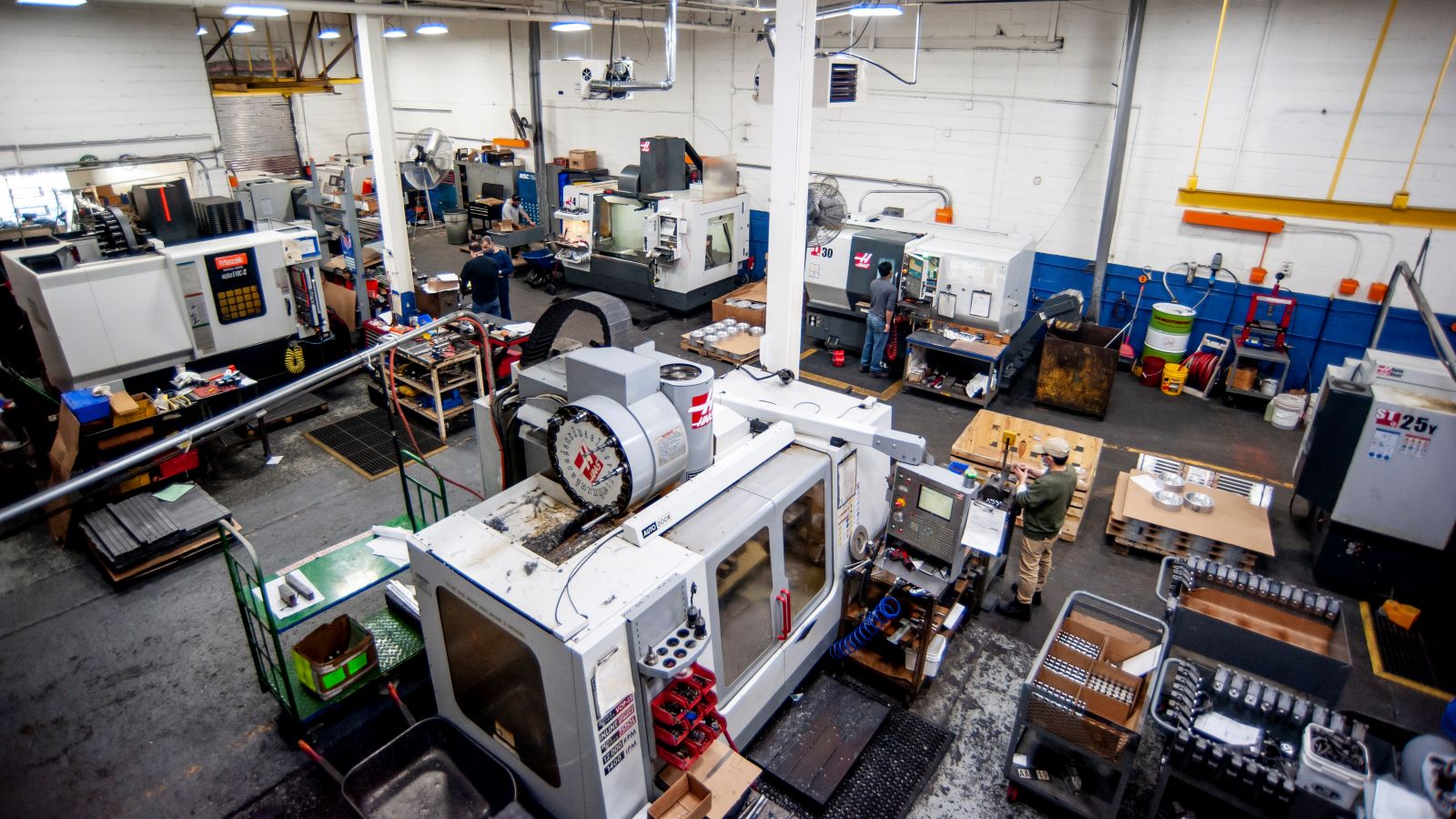
What does the U.S. military do when an expensive asset like a plane or a weapons system begins to break down?
Often, it turns to companies like Parts Life, Inc.—an innovative manufacturer that can reverse-engineer obsolete parts and help find solutions for hard-to-replicate products. But after a tax law change went into effect in 2022, the New Jersey–based manufacturer is facing increased costs for research and development, creating a barrier to the kind of innovation that is the focus of its business.
The change: Until the beginning of 2022, businesses could deduct 100% of their R&D expenses in the same year they incurred the expenses. Starting this year, however, a tax law change requires businesses to spread their deductions out over a period of five years, making it more expensive to invest in growth and innovation.
A focus on innovation: For Parts Life, coming up with new ideas is an essential, daily activity.
- “Parts Life is built around being a solutions provider,” said Parts Life President and CEO Sam Thevanayagam. “We are providing solutions for very expensive and mission-critical assets that are extremely strategic for the defense of the nation, but are also older—so their parts are not necessarily being supported.”
- “That’s where we come in to do reverse engineering. So, we’re looking at an old problem, but using innovation to solve it going forward.”
A benefit for savings: By helping the military extend the life of its assets, Parts Life also helps taxpayers.
- “We’re taking care of the warfighter and the taxpayer,” as Thevanayagam puts it.
A look ahead: As global conflicts shift, the U.S. military needs suppliers like Parts Life to help it develop solutions for future challenges, too.
- “Right now, our military is coming out of conflicts in Afghanistan and Iraq, but future conflicts may involve different terrain with different problem sets,” said Thevanayagam.
- “The work that we are doing today is helping them figure out how to approach those challenges. We’re having them tell us where they need to be, and then we’re helping them with the innovation they need to be successful.”
A tough choice: With the change in tax law, companies like Parts Life will be forced to make difficult decisions about how to spend scarcer resources, harming their ability to do critical, forward-looking work.
- “Currently, we’re leaning forward in resources and talent to lead the future,” said Thevanayagam. “If the government is going to pull the rug out from under us, we’re not going to be able to be aggressive. We’ll have to focus on maintaining our business rather than investing in new innovation.”
Our take: The NAM has pushed forcefully for the tax change to be reversed—and in October, told policymakers that the R&D amortization provision poses a “serious threat to our national security,” in part because of its impact on manufacturers like Parts Life that supply and support the U.S. military.
The bottom line: “The only way for us to continue to be relevant is to make sure that we’re investing in innovation and seeing what we can do to be a part of designing the future,” said Thevanayagam.
Visit the NAM’s R&D Action Center for critical R&D policy updates, industry stories and an opportunity to engage directly with your members of Congress.
New Data: Taxing R&D Will Cost U.S. More Than 260,000 Jobs Next Year If Congress Doesn’t Act
Manufacturers Would Lose 60,000 Jobs and $32 Billion
Washington, D.C. – The National Association of Manufacturers released new analysis revealing that if the tax code’s research and development amortization requirement, which went into effect this year, is not reversed immediately, the U.S. economy would lose 263,382 jobs and experience an $82.39 billion hit to GDP in 2023.
Because the law changes the way businesses have handled investments for decades, companies like NAM member Miltec UV, which develops new UV lamp systems for curing inks and coatings for everything from optical fiber to soup can lids, are having to grapple with a significant new cost that they had not anticipated previously. “Absent congressional action, we’re gonna get hit hard,” said Miltec UV President Bob Blandford. “Our taxes are going to go up dramatically. That’s cash getting sucked out of the business. So that’s going to get pretty ugly.”
The manufacturing industry, which conducts 55% of private-sector R&D, would directly lose 59,392 jobs and face a decline in output of $31.69 billion. Prior to 2022, companies could immediately deduct R&D expenses in the year in which they are incurred, which promotes long-term job-creating investments in the United States. However, requiring companies to spread out these deductions over a period of years penalizes innovation by making R&D more costly.
“A failure to act will burden manufacturers large and small who use this tool to create well-paying jobs and support families and communities,” said NAM Managing Vice President of Tax and Domestic Economic Policy Chris Netram. “We need Congress to act quickly to address this and other critical tax provisions in year-end legislation before we cede our competitive edge to foreign nations like China, which provides a super deduction in the amount of 200% of R&D expenses.”
-NAM-
The National Association of Manufacturers is the largest manufacturing association in the United States, representing small and large manufacturers in every industrial sector and in all 50 states. Manufacturing employs more than 12.9 million men and women, contributes $2.77 trillion to the U.S. economy annually and accounts for 55% of private-sector research and development. The NAM is the powerful voice of the manufacturing community and the leading advocate for a policy agenda that helps manufacturers compete in the global economy and create jobs across the United States. For more information about the NAM or to follow us on Twitter and Facebook, please visit www.nam.org.
Why Manufacturers Need R&D Tax Certainty
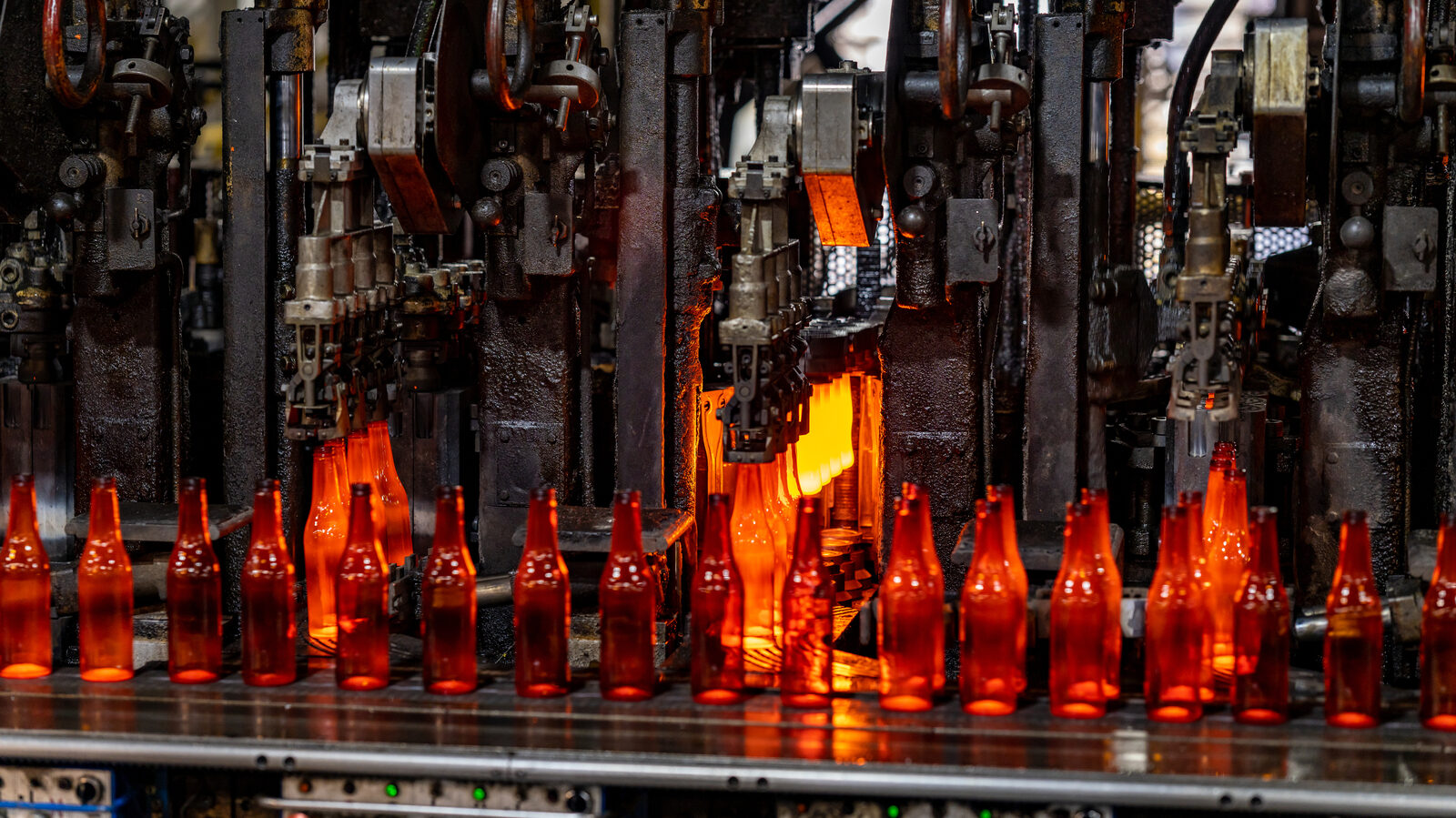
This story can also be found within the NAM’s R&D action center.
For companies like O-I Glass, Inc.—a glass manufacturing company headquartered in Perrysburg, Ohio—research and development just got a lot more expensive.
Until the beginning of 2022, businesses including manufacturers could deduct 100% of their R&D expenses in the same year they incurred the expenses—but a change in the tax law that took effect this year required businesses to spread deductions over a five-year timeframe. O-I Vice President of Global Tax and Business Services Scott Gedris explained how that impacts the company.
The scale: With 17 plants in 13 states around the country—and 70 plants in 19 countries around the world—O-I has a significant reach, serving both large multinational companies and smaller customers like microbrewers and small batch spirits manufacturers.
- The scale of the operation means that O-I invests significantly in R&D, working to develop innovative processes and specific product designs to meet individual customer needs.
- “If you look at our public financial statements, we spent $82 million in 2021 on R&D—primarily in the U.S.—and that is a significant investment for us,” said Gedris.
Case in point: In the past decade, O-I has invested heavily in developing more effective, efficient and sustainable processes. In 2011, it built a 24,000-square-foot R&D facility on its Perrysburg, Ohio, campus and has announced plans for a new glass manufacturing facility in Bowling Green, Kentucky, using technology developed at the Ohio facility.
- Because the company spends so much of its resources on R&D, a significant increase in the cost of investment would require it to make difficult decisions.
- “Anything that comes out of this in terms of tax dollars … creates a choice within our organization about where we allocate our capital,” said Gedris.
Environmental effects: At a time when O-I is making important investments in sustainability, a significant reduction in available resources could present obstacles to the company’s environmental goals.
- “When we rebuild a glass manufacturing furnace, that is a multimillion-dollar investment. The cost continues to increase with inflation and investment in modern technology that we need in order to meet our corporate sustainability goals,” said Gedris.
- “With the cost of that equipment increasing, if we’ve got $10 million less because of increased taxes, we need to evaluate whether we are going to rebuild a glass furnace in one of our 17 U.S. plants, or are we going to defer that? Alternatively, those dollars could come out of our R&D spend, which will impact what we are able to invest in future technology improvements.”
Human impact: Investments in innovation and R&D don’t just create better products and processes for consumers; they also support local economies across the country.
- “When we invest in a glass manufacturing furnace in these towns, it’s an investment in the community,” said Gedris. “We’ve got multigenerational glass manufacturers in those facilities. It’s a project that people depend on, and they have a lot of pride in the product and the processes at their facility.”
The last word: “When you’re investing in R&D, you’re investing long term—and that means you need certainty in the tax policy,” said Gedris.
Visit the NAM’s R&D Action Center for critical R&D policy updates, industry stories and an opportunity to engage directly with your members of Congress.
Corning Confronts R&D Hurdles

This story can also be found within the NAM’s R&D action center.
Corning Incorporated has been turning out innovations for well over a century and a half—since 1851, to be exact. But a recent change in tax policy that makes R&D more expensive could have a significant impact on the company’s ability to build on its impressive history.
- “We have a wonderful track record for innovation,” said Tymon Daniels, vice president of tax at Corning, a material sciences manufacturing company with a focus on glass.
- “In 1897, when Thomas Edison was working on electric lights, he came to us to make the glass bulbs. 110 years later, when Steve Jobs was working on the iPhone, he came to us to make the glass used for the screen. More recently, we figured out a way to make special glass vials that sped up production of the COVID vaccine. … We’ve been able to do this because of R&D.”
The issue: Until the beginning of 2022, businesses could deduct 100% of their R&D expenses in the same year they incurred the expenses. Starting this year, however, a tax law change requires businesses to amortize or spread their R&D expenses out over a period of five years, making it more expensive to invest in growth and innovation.
The impact: According to Daniels, the abrupt change in a policy that has existed for decades poses a serious challenge for the company.
- “The R&D deduction has been in existence for over 70 years—a very good tax policy. Requiring the amortization of R&D expenses is a dramatic shift to a very bad tax policy,” said Daniels. “It causes a significant spike in cash taxes.”
The trade-offs: At a time when company leaders are trying to make decisions about how to invest finite resources, a significant increase in the tax burden can hinder future growth plans, Daniels emphasized.
- “Our C-suite is trying to make decisions about big issues like capital expenditures and jobs,” said Daniels. “This makes those decisions harder and comes at a time when the economic outlook is highly uncertain.”
The action: Corning is asking Congress to find a solution, and quickly.
- “We need lawmakers to extend the full deductibility of R&D expenses,” said Daniels. “If Congress can’t make a permanent fix, then at least making full deductibility retroactive to 2022 and extending it through 2025 would still be good. Otherwise, the impact to Corning may be extra cash taxes of roughly $150 million in 2022 alone.”
The last word: “Requiring the amortization of R&D is all I’m thinking about right now,” said Daniels.
Future Skills Needs Study: Quick Facts
The Center for Manufacturing Research at the MI recently released a study in partnership with Rockwell Automation and PTC forecasting the skills needs of the manufacturing sector over the next 5 to 10 years.
Here’s what the study found:
- There are 3 major skills needs for the future: data analytics, an agile mindset paired with problem-solving and critical thinking, and interpersonal skills.
- Manufacturers are interested in preparing for upcoming skills needs by connecting with the workforce of the future. (See how the MI is building this workforce with our groundbreaking initiative, Creators Wanted.)
- Manufacturers are intentionally recruiting and promoting segments of the population that have historically been excluded from manufacturing roles or leadership. (Learn how the MI is leading conversations about D&I here.)
- Focusing on corporate culture is a key component of building and maintaining a strong workforce.
- Nearly every company surveyed reported the importance of continuous training for their current worker, i.e. “upskilling”.
Read the full report here.
Manufacturing in 2030 Megatrend: Ride the Power Curve

Digital manufacturing is built on just five “cornerstones”—and the work done in those areas in the next decade and beyond will largely determine the success or failure of key aspects of manufacturing’s technological future, according to the Manufacturing Leadership Council, the NAM’s digital transformation arm.
The MLC says that developments in electronics, computer systems, communications technologies, software and cyber infrastructure will have a direct impact on advancements made in human-machine interaction, automation and robotics, and autonomous operation. We break these down below:
Electronics: Intel predicts that by 2030 it will be able to incorporate 1 trillion transistors on a single semiconductor chip.
- Manufacturers will need that kind of power to enable computer systems and software to process much larger data volumes as they connect more plant equipment and people within their business ecosystems.
Computer systems: Manufacturers should expect a changing computer landscape as biological, physical and digital systems converge to offer more options.
- Quantum computing and nanocomputing offer potentially greater computational ability, which will allow manufacturers to process more data faster.
- Meanwhile, traditional computers will become lighter, thinner and more flexible. Different user interfaces, such as voice recognition, will progress.
Communications technologies: The years ahead will see manufacturers adopt 5G-based networks, which offer higher bandwidth and lower latency than prior technology.
- Communications technology suppliers are already working on 6G networks, expected to become commercially available in 2030.
Software: Next-generation software applications, in addition to web and mobile capabilities, will support voice, wearables, touch and AR/VR to a greater extent than ever before.
- These applications will be driven increasingly by artificial intelligence.
Cyber infrastructure: The cyber infrastructure that has been in development for the past two decades has allowed for separation between data and physical computing sources (i.e., cloud computing.)
- Looking ahead, an infrastructure that brings together data from all sources with business and technology tools will facilitate innovation, R&D, operating models and business growth.
Manufacturing in 2030 Project: Ride the Power Curve is just one of the megatrends identified by the Manufacturing in 2030 Project, a future-focused initiative of the MLC. For details on more megatrends, industry trends and key themes for Manufacturing in 2030, download the MLC’s new white paper “The Next Phase of Digital Evolution.”
